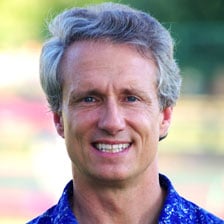I know I have already announced our flight to New Zealand, so you know that the blogs currently describe events that happened a day or two ago. I have been endeavoring to catch up after the handful of days in the Vietnamese countryside where I was unable to post the blogs I wrote then.
I have three blogs from Vietnam that I would like to share before we focus on New Zealand. The first (this one) will describe Saigon briefly, the second focuses on our visits to Vietnam War museums and the final shares an odd trip to an odd temple.
Seeing Saigon
I have been making a strong effort to call Saigon Ho Chi Minh City. After all, this is their country, not mine. Just because we have called it Saigon for years does not mean we have the right to call it that now.
Yet I no longer am making the effort. Every Vietnamese person we met called it Saigon. When I asked why, they said, “We all call it Saigon. No one calls it Ho Chi Minh, except the government.
So I now join the natives.
For us, Saigon was indistinguished. Perhaps we have simply visited too many Asia cities, but nothing about Saigon struck me as unique. Sure, we saw French-influenced architecture, but we saw some in Shanghai and Hanoi as well that was more impressive.
We saw historical buildings like the Reunification Palace.
This was the headquarters of the South Vietnam and US forces. It is the structure from which the last American diplomats were air-lifted out as the Viet Cong tanks ran through the gates. Interesting, but still much less compelling that some of the historical structures we have seen elsewhere. And, to be honest, I am not a fan of the 1960’s architecture of this building.
They had a flower festival going on that featured this fantastic floral dragon (for the Year of the Dragon), but not a great deal else.
As I wrote in my blog on Tet, the famed scooters were not in force. Perhaps the one aspect of Saigon that would have left an indelible impression was simply not on display (though I am OK with that). We were impressed with the versatility of scooters. Cars here are rare because 1) most people have low incomes and 2) all cars have a 200% import tax. Since Vietnam manufactures no cars, all cars are subject to the import tax. The mathe is pretty compelling: when you have a $25,000 car going for $75,000 in a country that has an average household income below $4,000, you are not going to sell many cars. So scooters do everything.
They carpool.
They have child seats.
FInally, Saigon was really hot and humid - think Houston in July. Oddly enough, for a city that is constantly hot and humid, its facilities often lack adequate air conditioning.
In short, we liked, but did not love Saigon.
As is our custom, we tried to walk everywhere. I have come to believe that cities hide their souls in their side-streets. We came to understand Paris in the ethnic neighborhood we stayed in more than the Champs-Ellyses. Beijing releaved itself in the various Hatongs, markets and streets. Hanoi virtually burst with energy and possibility. We watched how people shopped and what made them smile. Since much of Saigon was closed for Tet, the city seemed sluggish and flat.
I, however, did get a few photos from our walkaround.
Here we are in front of a statue of Ho Chi Minh near the Communist Party Headquarters.
This young girl found a spot in the shade to cool off and enjoy her candy. She seems old beyond her years in this shot. She was not interested in smiling which saddened me.
I mentioned the photocopied US bills used in funerals to help provide funds for the dead in their next life, but I did not have a good shot at the time. The front looks exactly like a US $100 bill, but the back makes it clear that this is not real.
We had a couple of ironic shots as well. The first shows a group of Vietnamese Communist soldiers taking a rest on the sidewalk. What I love is the “Chanel” sign directly over them.
My favorite irony came from two impressive floral displays. The first is the Communist hammer and sickle, symbolic of the struggle of te worker and the farmer against the oppression of the profit-seeking capitalist and his poisonous corporations: “Workers of the world unite!!!”
Roughly 100 feet away is this dragon, the symbol of the Vietnamese people (the legend says they are the descendents of dragons) in the auspicious Year of the Dragon! Power to the people of Vietnam!! Oh, and if any of you Vietnamese Communists get thirsty while fighting profit-seeking corporations, you can enjoy a Pepsi!
As I have said before, the word, “Communist” has lost any economic meaning. The party has no interest in promoting a communist or ever socialist economic system. They pay lip service to Ho Chi Minh and his teachings, but no one really buys in anymore. The party is interested in staying in power. A strong, growing economy makes for happy people and more national clout. Free markets and private ownership (most of the time) seem to be the best roads to this goal. So, we practice free market semi-capitalism and call it communism.
This linguistic flexibility is kinda appealing to me. Can I be a camp director, but call myself and astronaut? I would also like to stop calling my musings a “blog” and instead use “scripture” or “historic document”. Fenway is no longer a dog, but a unicorn.
Language is fun when it loses its pesky insistence on meaning!
Steve Sir













